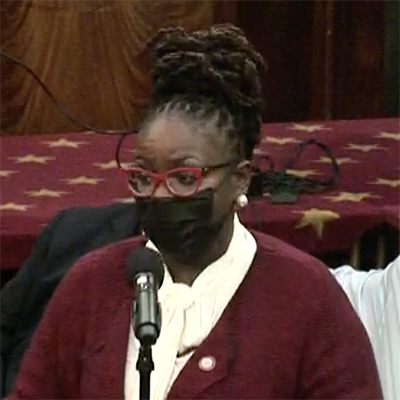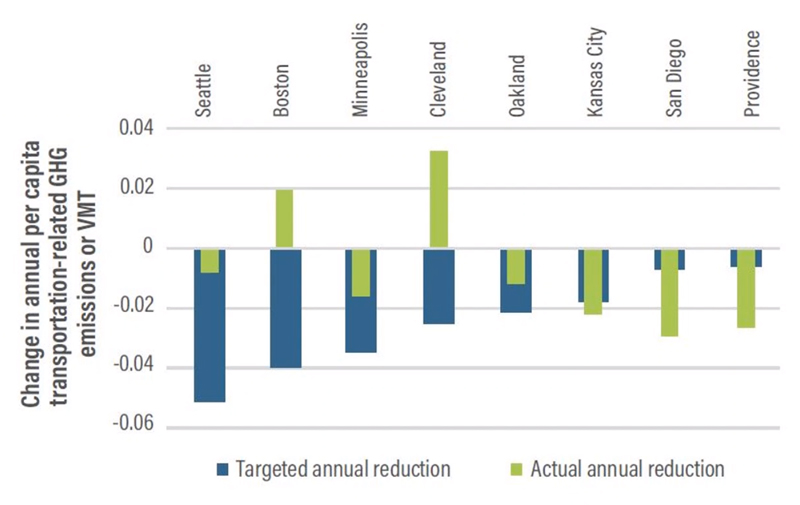Oregon is working on multiple fronts to help meet its goal of reducing greenhouse gas emissions 80% below 1990 levels by 2050.
But those measures won’t be enough to hit the target, Alan Zelenka, assistant director for planning and innovation at the Oregon Department of Energy (ODOE) said last week.
That’s where the Transformational Integrated Greenhouse Gas Emissions Reduction (TIGHGER) project comes in, Zelenka said during a Dec. 8 virtual public meeting to the explain the initiative, a collaboration with Oregon Global Warming Commission (OGWC).
Zelenka listed the major “planned actions” Oregon is putting in place to meet its 2050 objectives, including three efforts led by the Department of Environmental Quality:
- implementation of the Climate Protection Program, intended to drive down emissions from stationary sources, transportation and natural gas by setting declining caps on GHGs;
- an expansion of the Clean Fuels Program, which will decrease the carbon intensity of fuels sold in the state 25% by 2035; and
- development of a program aimed at reducing GHG emissions from electricity generation 80% by 2030, 90% by 2035 and 100% by 2040.
Despite the immense scope of those efforts, a line graph shared by Zelenka illustrated the gulf between the reductions those “business-as-planned” measures are projected to provide and what Oregon actually needs to stay on its “decarbonization pathway.”
“So TIGHGER is in essence a gap analysis,” he said. “What actions do we need to close the gap between the two lines and meet our goals? With all of those actions identified through the TIGHGER project, we can then, with the Global Warming Commission, create the plan to meet our greenhouse gas emission reduction goals.”
TIGHGER’s focus will be medium-term — a “Roadmap to 2035” on the journey to achieving the 2050 goals.
Maya Buchanan, ODOE senior climate policy analyst, explained that the TIGHGER process will entail six steps:
- identifying new actions to reduce GHGs or sequester carbon;
- analyzing estimated GHG reductions and the cost of each action;
- developing economic sector-based marginal abatement cost (MAC) curves, which illustrate the cost-effectiveness and emissions reduction potential of each action;
- determining co-benefits for each action — that is, whether an action provides other social or economic benefits beyond reductions;
- scoring and ranking the actions according to an accepted evaluation standard; and
- creating the “Roadmap to 2035.”
“We are developing a broad list of potential actions that can be modeled and determining the greenhouse gas potential of those actions and their cost-effectiveness over a period of time. And these actions span a diverse array of sectors,” Buchanan said.
TIGHGER will look across the entire economy, examining potential measures related to electricity generation, natural gas, transportation, industry, agriculture, natural lands, landfills, residential and commercial buildings, and land use. ODOE will consult with other state agencies and stakeholders in the effort and rely on input from the OGWC.
The 2035 timeframe of the project requires ODOE to factor in only commercially available technology in calculating the MAC curves used to assess the cost-effectiveness of potential actions.
“But the analysis supporting the roadmap is going to go beyond MAC curves to help address two really important facts,” Buchanan said. “One, that many of the actions are interdependent on each other and two, that many actions will likely be needed simultaneously to help achieve our greenhouse gas reduction goals. To address this, the project also includes an analysis of how actions can be bundled together to achieve the targets.”
‘Things We Can Control’
Chris Strashok, senior consultant with Sustainability Solutions Group (SSG), said the “integrated systems dynamics” model his company is developing for TIGHGER will be capable of representing the impact of those bundled interactions.
“We are capturing those intricacies and those dynamics within the system,” Strashok said. “Things like population obviously drive energy use, so if population grows [then] the more energy we use [and] that will influence the system in overall land use. So, if we remove forest land to build houses, that would obviously influence the sequestration potential that those forests have.”
SSG’s model will also strive to be as geographically granular as possible to assess the effectiveness of GHG-reduction activities based on the specific characteristics of localities.
“We’re not just looking at one just big number for the overall state, but radiating down to the county level because we understand that the state is very diverse. The west and east and north and south are quite different climates, populations and demographics. Understanding those differences is important to having a plan that addresses the different areas of the [state] in different ways,” Strashok said.
Zelenka clarified that potential TIGHGER actions will be limited to activities within Oregon’s boundaries — “the things we can control,” excluding industrial production occurring elsewhere.
OGWC Chair Catherine Macdonald said that the TIGHGER project is following an “aggressive” timeline “in the hopes that we can get enough progress made so that we would be able to make good recommendations on important next steps in the 2023 [legislative] session.”
“People think that 2023 is way off. It’s not,” Zelenka said.

